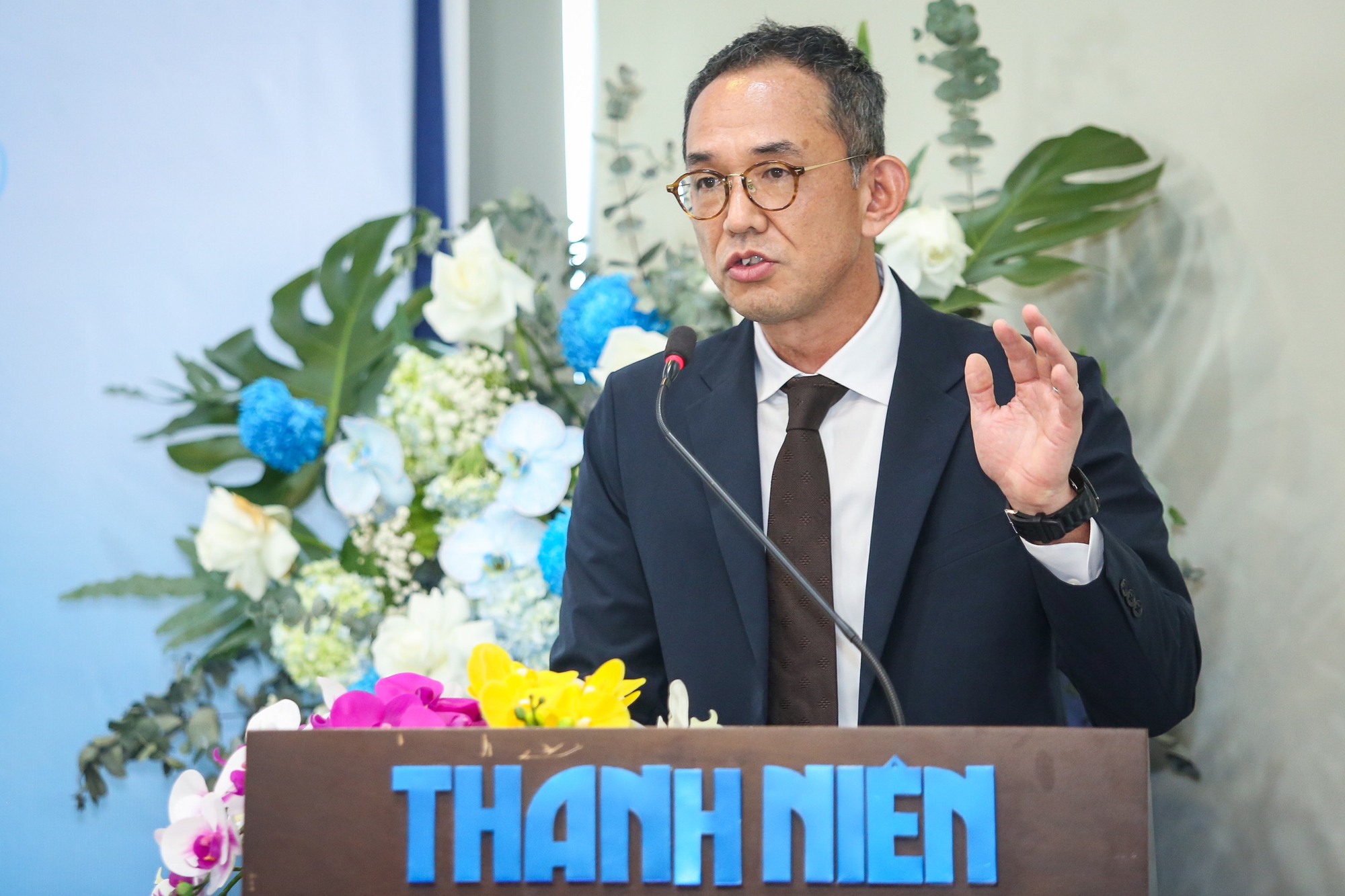That is the assertion of Mr. Shimada Takahiro - General Director of Kraft of Asia Paperboard & Packaging Company at the seminar "Attracting green investment: Filtering the industry or reducing emissions?" organized by Thanh Nien Newspaper on 5/12.
Mr. Shimada Takahiro stated that the company has a KOA factory producing paper to make cartons with the facility in Phu My 3 Industrial Park (Ba Ria-Vung Tau province). Cartons as well as carton paper are important and indispensable industries in transportation when transporting electronic components, clothes, shoes ... there must be cartons for packing. Currently, it may be desirable to take advantage of the carton after use for recycling again. When recycling to turn into cartons must use a lot of water, energy and fuel. This is one of the industries that is assessed to be prone to environmental pollution, emitting a lot of CO2. Therefore, the company must come up with many solutions to reduce pollution and reduce emissions.
According to KOA research, in China, when producing 1 ton of cardboard, it will emit 1.15 tons of CO2. In Vietnam from 0.91 - 0.97 tons of C02; in Europe, the figure is 0.45 tonnes of C02. At the KOA plant, emissions are comparable to those of European environmental protection companies. To do this, the company had to limit all energy consumption, using modern technology and lines from Japan. Japan's paper production technology is unique, different from the technology in Vietnam. Looking at it, it can be seen that KOA's carton paper production line is shorter than basic paper production lines in Vietnam. This shortened process reduces the drying process of drying paper, which saves a lot of energy. The KOA plant also uses natural gas as fuel while other plants burn coal. This greatly reduces greenhouse gas emissions.

The papermaking industry is at risk of polluting the environment, but with modern technology, the KOA factory has minimized emissions
Regarding wastewater issues, Mr. Shimada Takahiro said that in Vietnam, other factories use glue leather to glue and waterproof carton paper. However, the KOA factory does not use glue leather, but uses a durable enhancer, increasing waterproofing for paper. Glue skin is like a starch lake, if used a lot, it will cause contamination to wastewater. The more starch used, the dirtier the wastewater. The proof is that when using input scrap sources in Vietnam, glue and starch are very much, so the dirtiness of the water is very high. In contrast, at the KOA plant and factories in Europe use durable enhancers that help reduce dirtiness in the water.
"In Vietnam, the standard of wastewater is very high, so it takes many advanced equipment to meet the standard. I hope other companies will also use advanced technology to help wastewater reduce pollution," Takahiro Shimada advised, adding that the KOA plant uses boilers to take advantage of heat also helps reduce emissions. Because the input materials for making paper are mostly waste paper in the city, there are many impurities. Therefore, the factory after producing waste is not taken out but used for recycling. The annual waste output of the plant is about 38,000 tons, which is used as raw materials to take advantage of heat. The heat generated is used to make energy for the production process, reduce emissions, greenhouse gases. With this solution, it helps to reduce 24,500 tons of C02 equivalent to emissions to the environment every year. At the moment, the plant's emissions are about 100 tons. If this method is used, it will reduce 1/4 of the C02 gas released into the normal environment.
The next plan is that from 2024 the factory will use solar panels as energy instead of electricity. By 2030, gas will be rephydrogen. This study is rushing to implement by 2050, if Vietnam reaches zero emissions, at the same time the KOA plant will also reach zero emissions.